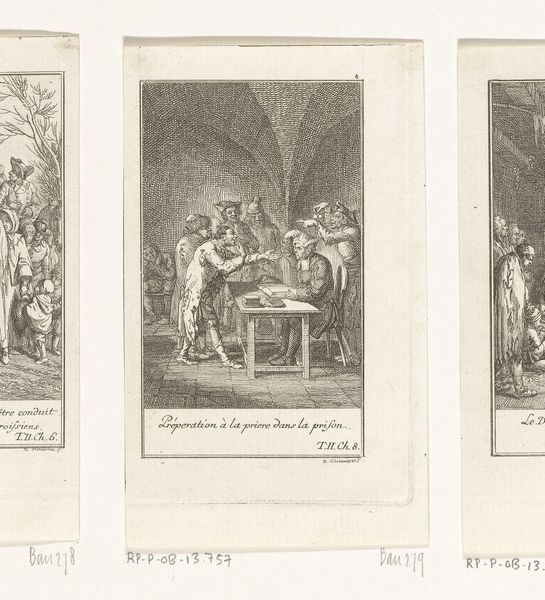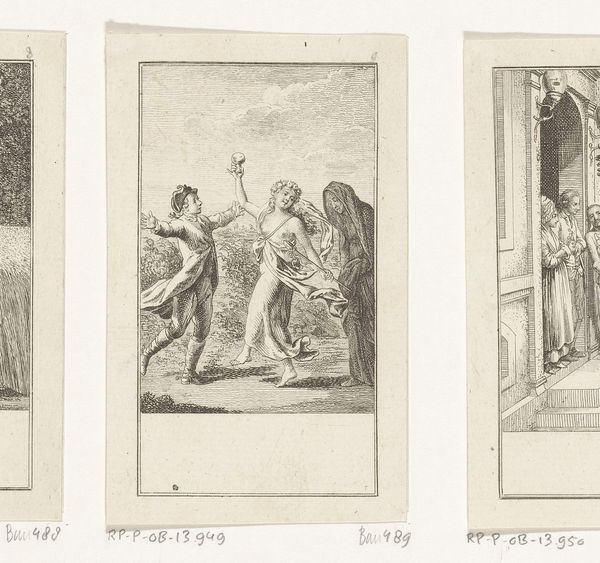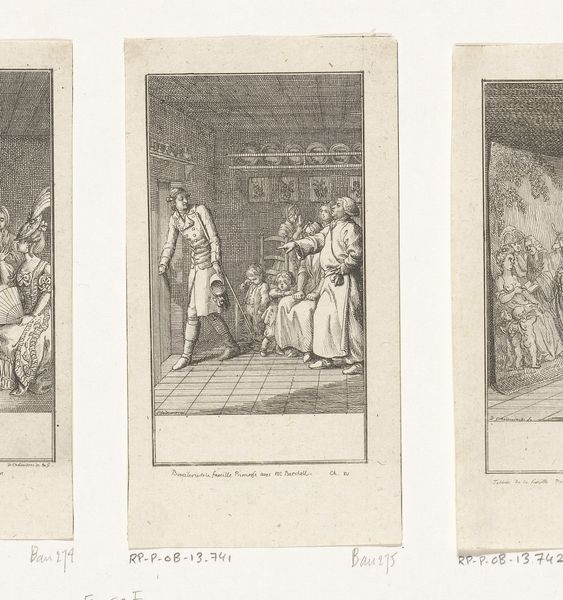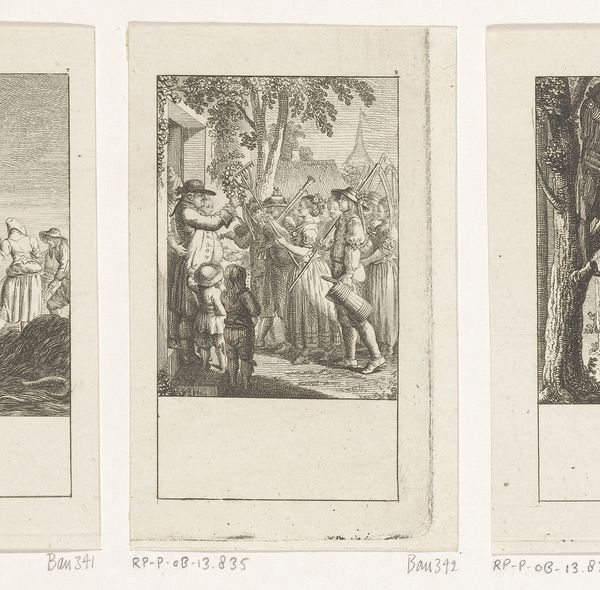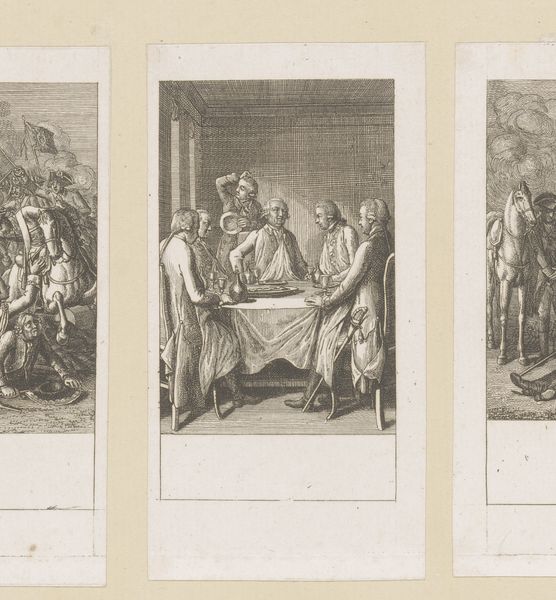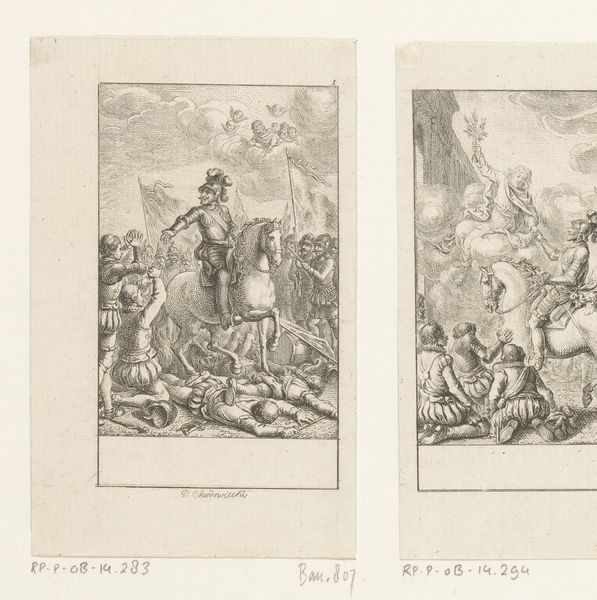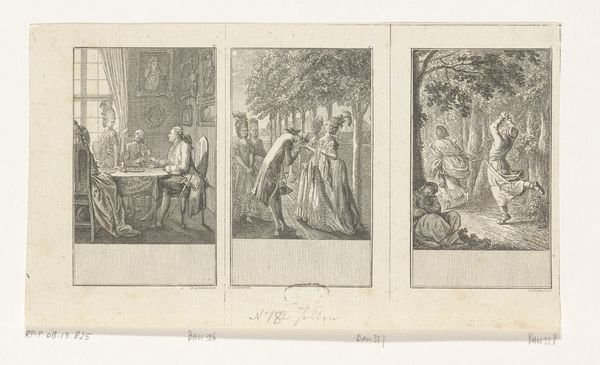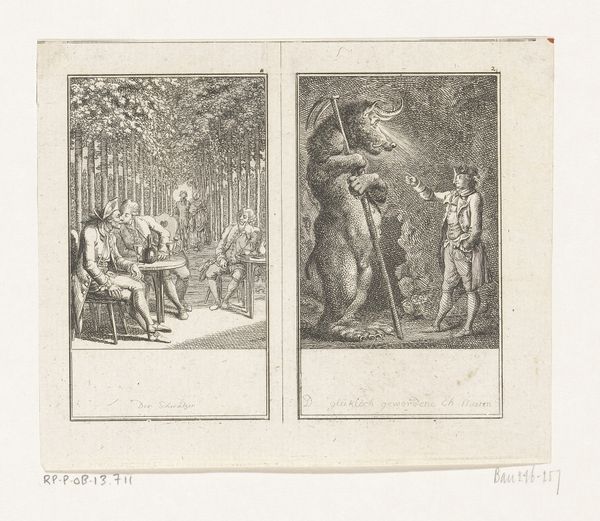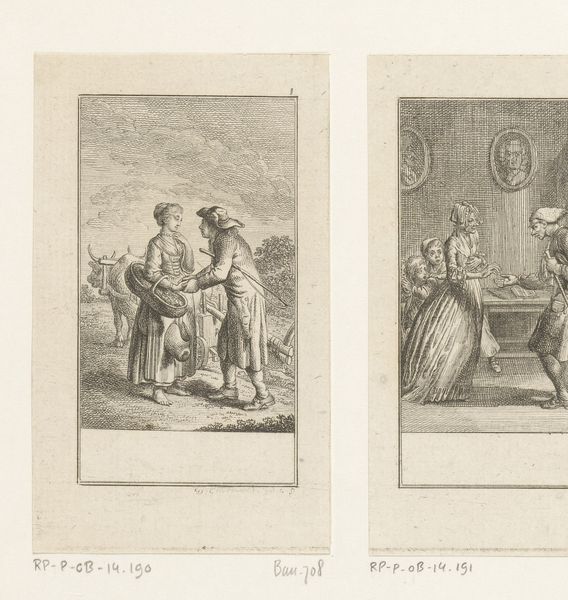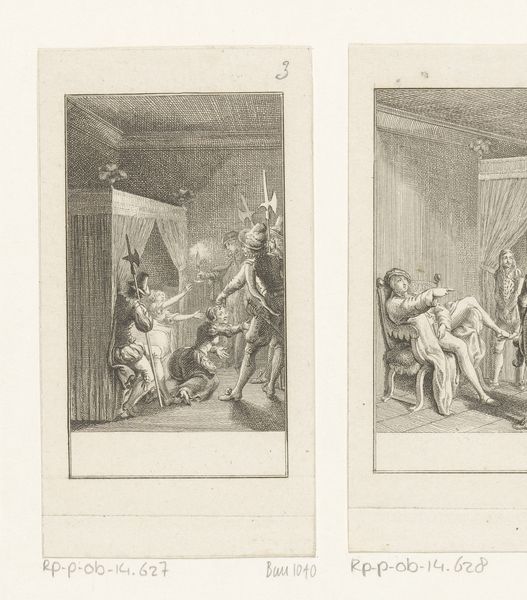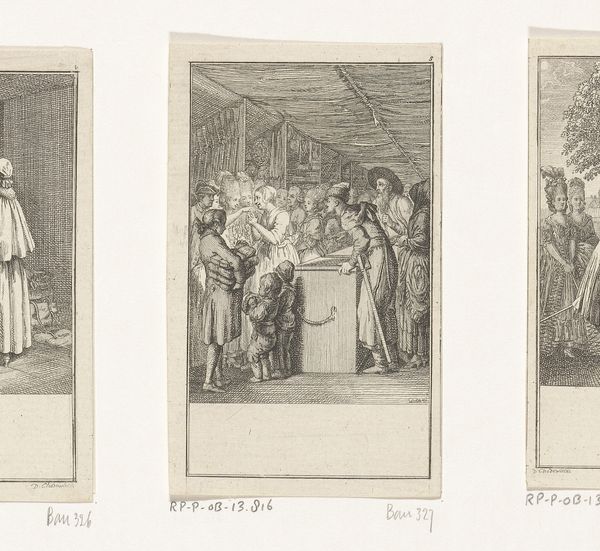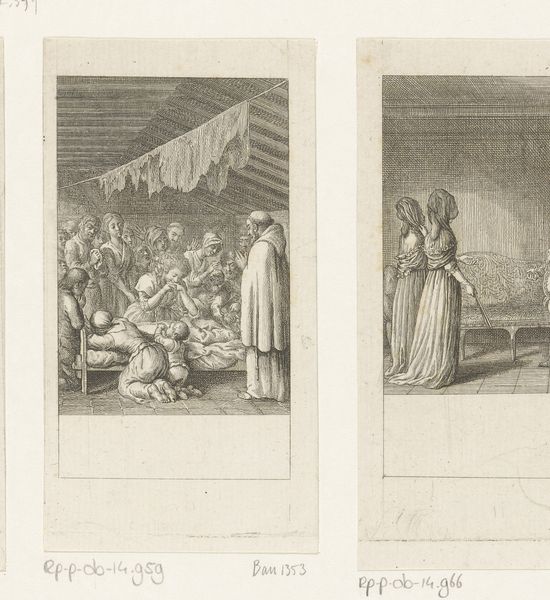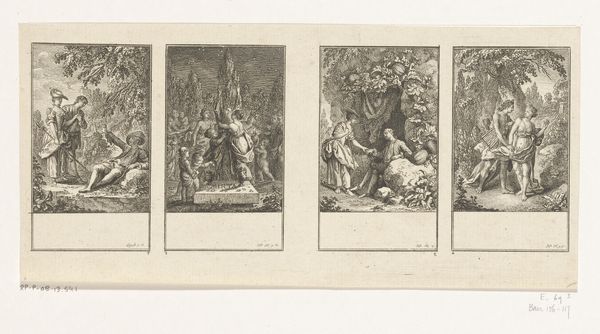
Dimensions: height 106 mm, width 185 mm
Copyright: Rijks Museum: Open Domain
Curator: Let’s turn our attention to this engraving and print on paper, titled "Drie scènes uit Hermes' Sophiens Reise," or "Three Scenes from Hermes' Journey of Sophia," created by Daniel Nikolaus Chodowiecki in 1777. It’s currently held in the Rijksmuseum collection. What's your immediate take? Editor: Well, the composition, split into three distinct panels, immediately catches the eye. The monochrome palette gives it a sense of austerity, almost classical restraint, yet the scenes depicted have an understated Romantic-era dramatic flair with lots of detail. Curator: Exactly! Chodowiecki was working in a period where the Enlightenment’s emphasis on reason was being challenged by Romanticism’s focus on emotion and the individual. He captures that tension so well in these genre scenes. This piece is an illustration based on a popular novel. The novel, written by Johann Timotheus Hermes, showcases the education and adventures of Sophia as she travels and learns about the world, presented in a series of vignettes. Editor: I see that sense of narrative playing out within the composition itself. Note how each panel operates almost independently, with its own vanishing point and compositional logic, yet they are all contained within the same plane of existence to complete the larger image. There is depth conveyed through cross-hatching and line weight, considering the limited value range that is accessible working primarily in pen and ink, but look at the dynamic range achieved through masterful engraving. Curator: He's using that restraint to offer social commentary, don't you think? This particular moment in the late 18th century was a time of immense social and political change, as Enlightenment ideas began to clash with the old aristocratic order, so to present images in this seemingly restrained illustrative way seems to speak to the ways in which those revolutionary ideals were circulated into popular imagination through texts. The format itself aided distribution. These prints allowed people to engage with those ideas, but on a more personal level than public declarations or proclamations. Editor: Absolutely! It’s an object that allows us to look at the world in microcosm—carefully constructed, thoughtfully rendered and composed in a way that pulls the eye around within the three separate narratives in one linear experience. I am moved to consider how Chodowiecki understood how these lines and shapes could articulate not just objects, but narratives of meaning-making as well. Curator: And considering the artwork's role in illuminating a widely circulated novel, we can see how deeply images and print like these could shape social norms of behavior, aesthetics and even revolutionary fervor. Editor: Indeed, seeing how those shapes came together into an easily digestible experience reveals Chodowiecki's deep understanding of composition and visual storytelling and his sensitivity to how society experiences narrative as meaning making in society.
Comments
No comments
Be the first to comment and join the conversation on the ultimate creative platform.
